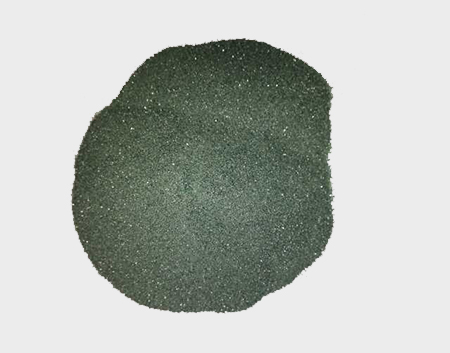Silicon carbide is a non-metallic carbide composed of silicon and carbon by covalent bond. Its hardness is second only to diamond and boron carbide. The chemical formula is SiC. Colorless crystal, blue black when the surface is oxidized or contains impurities. Silicon carbide variants with diamond structure are commonly known as emery. The hardness of emery is close to that of diamond and has good thermal stability β- Conversion of silicon carbide into α- Silicon carbide, α- Silicon carbide is still stable at 2400 ℃. It is stable to hydrofluoric acid aqueous solution and concentrated sulfuric acid, but unstable to the mixed acid or phosphoric acid of concentrated hydrofluoric acid and nitric acid. It is decomposed by molten alkali in air atmosphere. It is divided into synthetic silicon carbide and natural silicon carbide. Natural silicon carbide, known as carbon silica, mainly occurs in kimberlite and volcanic amphibolite, but its amount is very small and has no mining value.
The industrial silicon carbide used as recrystallization raw material is artificial silicon carbide, with SiC content of 95% ~ 99.5%. It often contains a small amount of free carbon and impurities such as Fe2O3, Si and SiO2. Silicon carbide can be divided into hexagonal system according to crystal type( α- SiC) and cubic system( β- Due to the different periodicity of its crystal arrangement, the hexagonal system has the crystal forms of hexagonal cells (2h, 4h, 6h... Etc.) and rhombic cells (15R, 21R, 27R... Etc.), and there are more than 100 kinds of homogeneous polycrystalline structures of silicon carbide. Industrial silicon carbide α- SiC and β- The mixture of SiC has two colors: black and green. Pure silicon carbide is colorless and transparent. It is black, green, blue and yellow when containing impurities. Hexagonal and cubic crystal systems, the crystal is plate-shaped and complex cubic columnar. It has glass luster, density of 3.17 ~ 3.47g/cm3, Mohs hardness of 9.2 and microhardness of 30380 ~ 33320mpa; Melting point: decompose at 2050 ℃ in the atmosphere and 2600 ℃ in the reducing atmosphere; The elastic modulus is 466 and 480mpa; The tensile strength is 171.5mpa; The compressive strength is 1029mpa; The linear expansion coefficient is (25 ~ 1000 ℃) 5.0 × 10-6/℃; The thermal conductivity (20 ℃) is 59W / (m · K). The chemical properties are stable. It is boiled in HCl, H2SO4 and HF without etching, but it begins to decompose at 230 ℃ in concentrated H3PO4.
Discovery history
Silicon carbide is a kind of carbide accidentally discovered by American engineer e.g. Acheson when electrofusing diamond in 1891. At that time, it was mistakenly thought to be a compound with corundum, which was named emery. In 1893, Acheson developed an industrial method for manufacturing silicon carbide. A resistance furnace with carbonaceous material as the furnace core was powered on to heat the mixture of SiO2 and carbon to react to produce silicon carbide (U.S. Patent No. 492767).
Classification and grading
Silicon carbide can be divided into different categories according to color, purpose and structure.
Pure silicon carbide is a colorless and transparent crystal. Industrial silicon carbide has colorless, light yellow, light green, dark green or light blue, dark blue and even black. The abrasive industry divides silicon carbide into black silicon carbide and green silicon carbide according to color, of which colorless to dark green are classified as green silicon carbide; Light blue to black are classified as black silicon carbide. The reason of polychromatic silicon carbide is related to the existence of various impurities. Industrial silicon carbide usually contains about 2% of various impurities, mainly silicon dioxide, silicon, iron, aluminum, calcium, magnesium, carbon, etc. When there is more carbon in the crystal, the crystal is black. Green silicon carbide is brittle and black silicon carbide is tough. The grinding ability of the former is slightly higher than that of the latter. According to the particle size, the products are divided into different grades. China's abrasive industry stipulates that there are 17 grades of black silicon carbide; Green silicon carbide has 21 particle size grades. The abrasive of No. 80 and above is called abrasive grain, and the abrasive of No. 100 ~ 280 is called grinding powder.









